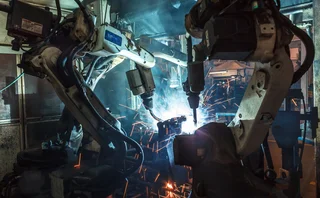More than a Fun Space: Getting the Most Out of Innovation Labs
Innovation labs have become the norm for most banks, but that doesn’t mean it’s a fool-proof strategy.

Innovation is at a premium. There is no denying this fact. Regulations have hamstrung technology departments over the past five years, taking the majority of their budgets and time.
So it’s easy to see why many banks have been drawn to the innovation lab model. On paper, the concept seems like an easy way to implement new technologies: Create a space where a group of your employees can interact with new technologies and fintech vendors to find creative solutions to problems the firm is facing.
But the issue is much more complex than that. If the process was that simple, then innovation would be easy, and banks would have no problem creating and integrating new solutions and platforms into their firm.
Clearly, that’s not the case. There are a plethora of boxes that need to be checked before a solution from a fintech firm can be properly implemented into a bank. Is it compliant? Is it scalable? Does it fit within the firm’s current infrastructure?
And while these all seem like obvious issues that need to be addressed, there’s another question that’s just as pressing that does not get asked nearly enough.
Will stripping the innovation out to a separate area of the firm negatively impact the entire organization?
Throughout the Firm
Concerns around issues of isolation that innovation labs could cause was a topic first brought to my attention during the C-level panel at Waters USA back in December. Blackstone CTO Bill Murphy, who you might have heard on a recent episode of the Waters Wavelength podcast, raised some problems he sees with innovation labs.
“It can’t be separate. It has to be thoroughly part of the culture,” Murphy said. “The people who say, ‘Well, I can get one cool space and hire people on hover boards and suddenly I’m going to be innovative,’ are crazy. It needs to be every person at your organization, or at least the majority, in order to really build the culture and get people to think like that.”
I think Murphy makes a good point, and it’s one I’ve brought up to people involved in innovation labs I’ve spoken to over the past few months. The first was Bruno d’Illiers, COO of Corporate and Investment Banking (CIB) in the Americas and deputy head of CIB Americas at BNP Paribas. While speaking to d’Illiers at the French bank’s New York innovation lab, I asked how he ensures innovation still remains an important attribute of the entire organization.
D’Illiers answers was simple. “I want to contaminate it,” he said.
He went on to say that while he recognized there would always be those within the firm who would resist change, the lab could be a jumping off point to infect the rest of the firm. Even if the lab was able to convert 20 to 30 percent of the people at the bank, d’Illiers said, real change in the culture and mindset could be possible.
Stay on Point
I asked Elly Hardwick, head of innovation at Deutsche Bank, which recently opened up an innovation in New York, the same question, and she had a slightly different perspective. For Hardwick, it was about ensuring the labs recognize they are part of a bigger picture that ultimately ends with servicing the banks.
“I personally believe strongly that innovation doesn’t happen in a vacuum. It takes place relative to something. In our case, that something is Deutsche Bank,” Hardwick says. “We always work in close partnership with a business unit to make sure the technology we’re bringing in meets an actual demand of the business. If the labs were to bring in technology that didn’t have a customer that was in the bank, then we really wouldn’t be doing our job.”
Interested in hearing more about this topic? Funny you should ask. We actually have a panel covering this very topic, featuring the aforementioned Bill Murphy, at the WatersTechnology Innovation Summit, taking place in New York on April 5. To see the conference’s entire program, and to register, click here.
Only users who have a paid subscription or are part of a corporate subscription are able to print or copy content.
To access these options, along with all other subscription benefits, please contact info@waterstechnology.com or view our subscription options here: https://subscriptions.waterstechnology.com/subscribe
You are currently unable to print this content. Please contact info@waterstechnology.com to find out more.
You are currently unable to copy this content. Please contact info@waterstechnology.com to find out more.
Copyright Infopro Digital Limited. All rights reserved.
As outlined in our terms and conditions, https://www.infopro-digital.com/terms-and-conditions/subscriptions/ (point 2.4), printing is limited to a single copy.
If you would like to purchase additional rights please email info@waterstechnology.com
Copyright Infopro Digital Limited. All rights reserved.
You may share this content using our article tools. As outlined in our terms and conditions, https://www.infopro-digital.com/terms-and-conditions/subscriptions/ (clause 2.4), an Authorised User may only make one copy of the materials for their own personal use. You must also comply with the restrictions in clause 2.5.
If you would like to purchase additional rights please email info@waterstechnology.com
More on Emerging Technologies
Buy-side data heads push being on ‘right side’ of GenAI
Data heads at Man Group and Systematica Investments explain how GenAI has transformed the quant research process.
Jump Trading spinoff Pyth enters institutional market data
The data oracle has introduced Pyth Pro as it seeks to compete with the traditional players in market data more directly.
Treasury market urged to beef up operational resilience plans
NY Fed panel warns about impact of AI and reliance on critical third parties.
Waters Wavelength Ep. 339: Northern Trust Asset Management’s Jan Rohof
This week, Jan Rohof from Northern Trust Asset Management joins to discuss how asset managers and quants get more context from data.
EY and Microsoft partner to bring agentic AI to risk management
The two firms are part of a deal to bring agentic AI processes to core operations like lending, servicing and risk, starting at Eurobank.
T. Rowe taps Genesis, Cusip lawsuit, FanDuel-CME tie-up, and more
The Waters Cooler: Tokenization and private markets, EuroCTP-BMLL, StateStreet-PriceStats, and more.
Tokenization & Private Markets: Where mixed data finds a needed partner?
Waters Wrap: Reading the tea leaves, Anthony predicts BlackRock’s Preqin deal, Securitize’s IPO, and numerous public comments from industry leaders are just the tip of the iceberg.
Fintech proposes borrowing AI standard from autonomous cars
Amid the rapidly growing use of financial AI, startup Martini.ai urges industry practitioners to coalesce around a common language to measure their progress and understand their own projects and capabilities.








